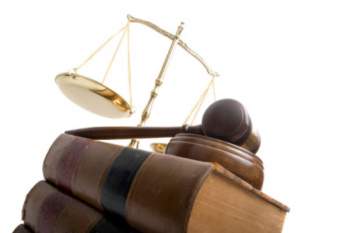
Brady v. Maryland

Brady v. Maryland
When a prosecutor knows something that could help to exonerate a defendant or mitigate his punishment, is the prosecutor obligated to make that information known to the defense? That's the question that the Supreme Court examined in the case of Brady v. Maryland. This landmark ruling changed the way prosecutors were required to do their jobs, and the term “Brady disclosure” exists to this day to describe disclosures of exculpatory evidence made mandatory by Brady v. Maryland.
Brady's Exculpatory Evidence
John Brady was a man who was accused along with another man, Charles Boblit, of the 1958 strangling murder of William Brooks. Brady maintained throughout questioning that while he had been with Boblit at the time of the murder, he had not actually strangled the victim.
Boblit was questioned five different times about the murder, and during one of these interrogations confessed both to hitting the victim with a shotgun to knock him unconscious and to performing the actual murder by strangling the victim with a shirt. Because the prosecution's death penalty case against Brady relied on the fact that they were accusing him of physically committing the murder in question, this was significant exculpatory evidence.
The Trial and Appeal
During the discovery phase of Brady's trial, his attorney asked prosecutors for any and all statements made by either man to the police, for use during direct and cross examinations and in closing arguments. The prosecutor turned over all but one of the statements. The one that he omitted was, of course, the one in which Boblit had confessed to performing the murder himself.
After Brady was convicted and sentenced to death, he got a new attorney, and this one read the trial transcripts for Charles Boblit. What he found shocked him: in that trial, the prosecution had used the confession that had never been turned over to the defense. Brady's attorney filed a motion for a new trial based on the exculpatory evidence. The court refused, but an appeals court granted the motion. The case was then appealed to the Supreme Court.
Supreme Court Ruling
The State of Maryland argued in its brief to the United States Supreme Court that the exculpatory evidence in question would not have actually exonerated Brady. They said in Brady v. Maryland that because the evidence was not sufficient for exoneration, and in fact still placed Brady as an accomplice at the scene of the crime, Brady's rights had not been violated.
However, the Supreme Court disagreed with Maryland's argument. In Brady v. Maryland, they ruled that any evidence that could help a defendant to receive less punishment or that could exonerate them was a mandatory part of disclosure from prosecutors.
After the case was decided in 1963, prosecutors have had to make “Brady disclosure” of any potentially exculpatory evidence, including but not limited to things like evidence of childhood abuse or trauma, pre-existing mental illness, or confessions made by other parties.



















